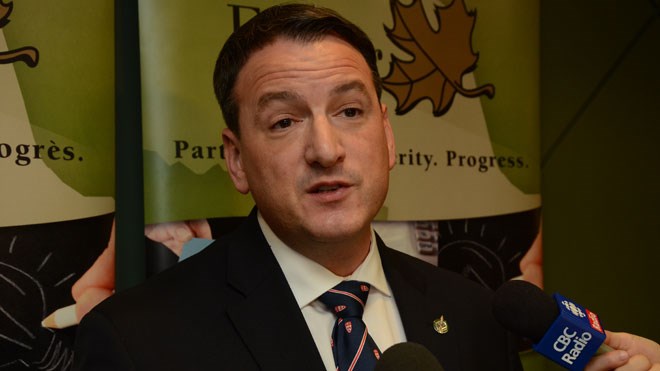After decades of lobbying and planning, the Maley Drive extension – in a scaled-back version, at least – appears to finally have the political support necessary to become a reality.
In comments last week in Greater Sudbury, Greg Rickford, the federal minister of Natural Resources and Minister for the Federal Economic Development Initiative for Northern Ontario, said the feds were prepared to be “full partners” on initiatives such as Maley.
“There’s been a lot of great priorities for the City of Sudbury and FedNor has been there at every turn so has the Building Canada Fund,” Rickford said Dec. 4. “We’ll continue to work with the province and the City of Sudbury on their priorities.
“At this point, I think it’s fair to say that not only are we full and effective partners, but that’s been reflected in significant announcements for Sudbury.”
The Building Canada Fund is a $14-billion program that funds major projects identified as priorities by towns and cities across Canada. Ontario's share is about $2.72 billion.
Last month, a federal official told NorthernLife.ca that the money is available according to whatever Ontario decides should get funding.
“Provinces and territories are the ones that prioritize projects -- we're just the financial guys,” said Vincent Rabault, press secretary to Denis Lebel, minister of Infrastructure, Communities and Intergovernmental Affairs.
“When they have decided, they submit a list to us and we provide money. But they decide, as long as it fits the requirements of the program.”
In recent comments in the Ontario Legislature, Brad Duguid, Ontario's minister of Economic Development, Employment and Infrastructure, said the province had finally received the details it needed to submit the priority list, and said Maley funding will happen.
“It's a commitment we made in the budget, (and) it's a commitment we will fulfil,” Duguid said. “And we're looking forward to moving on it as soon as we can.”
Commenting minutes after he was sworn in Dec. 2, Mayor Brian Bigger said he's committed to Maley, a project that has been the city's top infrastructure priority for more than a decade.
“You will see Maley coming back to council very soon,” Bigger said.
Greater Sudbury has been setting aside money each year for Maley Drive in its annual roads budget. Environmental assessments and other planning have been completed while the city has been waiting for the federal and provincial governments to commit their one-third shares.
While the full project would cost around $130 million, the province promised $26.7 million during the June election, an amount that would be matched by the federal government and the city, for a total of just more than $80 million.
That would be enough to build an improved Maley Drive from the Falconbridge Highway to Barrydowne Road. Then a new road would connect Barrydowne to College Boréal at the Lasalle Extension, where it would link up with Municipal Road 35.
That would allow heavy ore trucks to access Highway 17, but bypass Lasalle Boulevard and The Kingsway, two of the busiest roads in Greater Sudbury.
A second phase would widen the route to four lanes, diverting as much as 10,000 cars a day from the two roadways. But Tony Cecutti, the city's general manager of infrastructure, said in an interview last summer that even a scaled back Maley would help the city's road network.
“I think we'll still get tremendous benefit,” Cecutti said. “The heavy industrial truck traffic is going to want to go there. It will be an easier route will less traffic (signals). They won't be competing with domestic traffic by commercial areas like malls that tends to slow traffic down.”
–With files from Ian Ross
Join Sudbury.com+
- Messages
- Post a Listing
- Your Listings
- Your Profile
- Your Subscriptions
- Your Likes
- Your Business
- Support Local News
- Payment History
Sudbury.com+ members
Already a +member?
Not a +member?
Sign up for a Sudbury.com+ account for instant access to upcoming contests, local offers, auctions and so much more.
